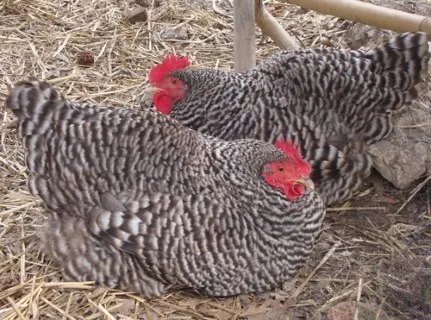 About Dominique Chickens
About Dominique Chickens
 |
Dominique Chickens are dual purpose birds. They excel in egg production and lay a steady three, large, brown eggs a week long into the winter months. Hardy survivors, the Dominique can survive a cold winter or a hot, humid summer. Dominiques mature quickly. A medium size fowl dresses out as an acceptable three-pound table bird.
Dominiques chickens grew up with America. In colonial days the Dominique fended for themselves as foragers of seeds, insects, and plants. Colonial America valued the Dominique's feathers as fill for their pillows and mattresses.
Broody Dominique hens make good mothers and pets. The hens have exceptional success and low mortality rates raising their brood. The hens have a calm, friendly demeanor. However, Dominique roosters are contentious and a worthy opponents to predators. Owners have seen roosters kill snakes and minks. Dominiques handle both confinement and free-range foraging equally well. Dominiques exhibit an incredible adaptability to their given environment.
Dominique are described as hawk-colored in reference to their plumage patterning. They display black barring over their entire white bodies. They sport medium red combs, wattles, and earlobes on a medium frame. Many confuse the Dominque with the Barred Rock breed. Experts can tell the difference immediately as the Dominque has a red rose comb; whereas, the Barred Rock has a red single comb. Males have a “U” shaped back with an upright tail. Female backs follow a more natural outline sloping down from head to tail.
Cater to your Dominique's foraging instincts. Provide them adequate runs with ample bugs, seed and pebbles. Of course, a little attention and a good layer food will pay rich dividends in egg and meat production. Keep the number of Dominique roosters to a minimum. However, you may want to keep a sufficient number around to ward off predators and to propogate this endangered species.